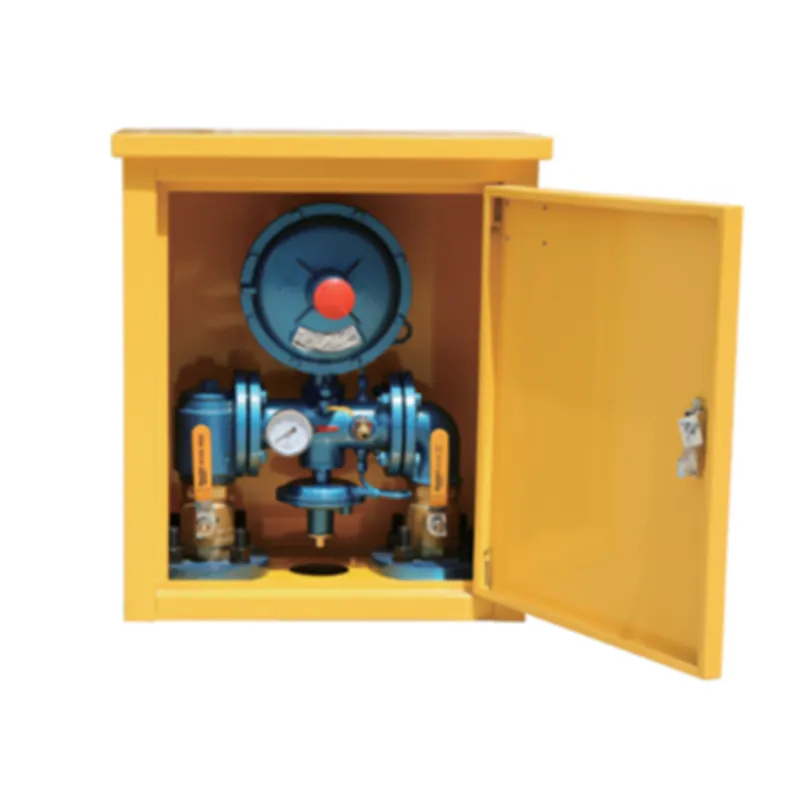
Dec . 09, 2024 16:21
Back to list
Electric Control Valve Regulation for Optimal Performance and Efficiency
Understanding Electrical Regulating Valves
In today's modern world, the efficient management of electrical energy is paramount in various industrial processes and systems. One of the critical components in this network of energy management is the electrical regulating valve, known in Arabic as صمام تنظيم كهربائي. This device plays a significant role in controlling and regulating the flow of fluids—most commonly liquids and gases—thereby ensuring optimal functioning in a variety of applications. In this article, we will explore the functioning, applications, and benefits of electrical regulating valves.
What is an Electrical Regulating Valve?
An electrical regulating valve is a mechanical device utilized to control the flow rate and pressure of fluids in a system based on electrical signals. Essentially, it acts as a gatekeeper, modulating the passage of fluids and optimizing their flow in accordance with the requirements of the system. The valve's positioning and opening can be adjusted electronically, allowing for precise control over flow rates and pressure levels.
These valves often utilize actuators—a device that converts electrical signals into mechanical movement—to facilitate the opening and closing of the valve. The versatility and responsiveness of electrical regulating valves make them a popular choice in a wide range of industries, from HVAC systems to chemical processing.
How Do Electrical Regulating Valves Work?
The operation of an electrical regulating valve can be summarized in several key steps
1. Signal Input The regulating valve receives an input signal from a control system, such as a programmable logic controller (PLC) or a building management system (BMS). This input signal indicates the desired flow rate or pressure level in the system.
2. Actuator Response Based on the input signal, the actuator of the valve begins to move. The movement can either be linear or rotary, depending on the type of valve.
3. Flow Regulation As the actuator adjusts the valve's position, it dynamically opens or closes the pathway for the fluid. This action allows for regulation of the flow based on the system's needs.
4. Feedback Mechanism Many modern electrical regulating valves include a feedback mechanism that informs the control system of the current valve position and flow level. This feedback loop allows for continuous adjustment and fine-tuning to maintain the desired set point.
Applications of Electrical Regulating Valves
Electrical regulating valves are employed across various sectors in both commercial and industrial applications. Some common areas of use include
صمام تنظيم كهربائي

- HVAC Systems In heating, ventilation, and air conditioning systems, these valves help manage the flow of hot or cold water and refrigerants, ensuring comfort and energy efficiency in buildings.
- Chemical Processing In chemical manufacturing processes, regulating valves control the flow of reactants and products, playing a vital role in maintaining the safety and effectiveness of operations.
- Water Treatment In municipal water systems, regulating valves manage water distribution, pressure, and flow to various facilities and residential areas.
- Oil and Gas Safety and efficiency are paramount in oil and gas operations. Electrical regulating valves are used to control the flow of fluids in pipelines, ensuring that pressure levels remain within safe limits.
Benefits of Using Electrical Regulating Valves
The use of electrical regulating valves brings numerous advantages, including
- Precision Control These valves provide intuitive and precise control over fluid flow, which is crucial for maintaining optimal operating conditions in complex systems.
- Energy Efficiency By optimizing flow rates and minimizing waste, electrical regulating valves contribute to overall energy savings—an essential factor for many industries aiming for sustainability.
- Reduced Wear and Tear Electronic control allows for smoother operation of the valves, leading to reduced mechanical wear and extended lifespan compared to manual or less sophisticated systems.
- Safety Enhancements With constant monitoring and feedback, electrical regulating valves enhance safety by preventing over-pressure and ensuring that the system operates within designated parameters.
Conclusion
In summary, electrical regulating valves are an essential element in modern fluid management systems, contributing to efficiency, safety, and precision. Their ability to adapt to varying operational demands makes them highly valuable across various industries. As technology continues to evolve, we can anticipate further advancements in valve design and functionality, paving the way for even more effective fluid management solutions in the future.
Next:
Latest news
-
Safety Valve Spring-Loaded Design Overpressure ProtectionNewsJul.25,2025
-
Precision Voltage Regulator AC5 Accuracy Grade PerformanceNewsJul.25,2025
-
Natural Gas Pressure Regulating Skid Industrial Pipeline ApplicationsNewsJul.25,2025
-
Natural Gas Filter Stainless Steel Mesh Element DesignNewsJul.25,2025
-
Gas Pressure Regulator Valve Direct-Acting Spring-Loaded DesignNewsJul.25,2025
-
Decompression Equipment Multi-Stage Heat Exchange System DesignNewsJul.25,2025

